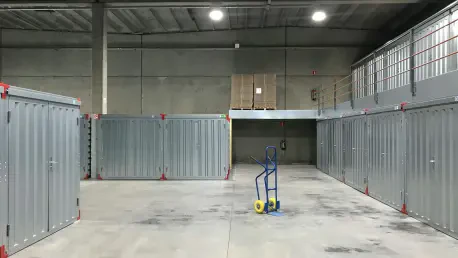Imagine a world where the rumble of heavy-duty trucks no longer comes with a cloud of diesel exhaust, where freight corridors hum with vehicles powered by a clean, zero-emission fuel. This vision is rapidly becoming reality as hydrogen fuel cell trucks emerge as a transformative force in the transportation sector. With the market for these innovative vehicles currently valued at USD 6.54 billion, projections indicate a staggering climb to USD 50.78 billion by 2034, driven by an impressive compound annual growth rate of 25.58%. This exponential growth reflects a global pivot away from traditional fossil fuel-based transport toward sustainable alternatives. Fueled by mounting environmental concerns and increasingly strict emission regulations, the rise of hydrogen trucks signals a profound shift in how goods are moved across continents. As this technology gains traction, it promises to redefine the future of freight with cleaner, more efficient solutions that address some of the industry’s most pressing challenges.
Technological Innovations Driving the Hydrogen Revolution
At the heart of this transformation lies a wave of technological advancements that are making hydrogen trucks a viable option for heavy-duty transport. Breakthroughs in fuel cell stack design, onboard hydrogen storage, and rapid refueling systems have significantly improved the performance and practicality of these vehicles. Unlike battery-electric trucks, which often struggle with range and payload limitations in long-haul scenarios, hydrogen trucks offer a compelling alternative with quicker refueling times and greater operational flexibility. The integration of renewable hydrogen sources and hybrid systems combining fuel cells with batteries further enhances efficiency, ensuring that these trucks can meet the rigorous demands of modern logistics. As manufacturers refine these technologies, the focus remains on scaling up production and reducing costs, paving the way for broader adoption across global markets. This momentum underscores the potential for hydrogen to become a dominant force in decarbonizing freight transport over the next decade.
Overcoming Barriers to Widespread Adoption
While the outlook for hydrogen trucks is promising, significant hurdles still stand in the way of their mainstream integration into the transport sector. High production costs and the limited availability of hydrogen refueling infrastructure remain critical challenges, slowing the pace of adoption despite growing interest. However, regulatory pressures and corporate commitments to sustainability are creating a powerful push for progress, encouraging investments in both manufacturing and infrastructure development. Collaborations between vehicle makers, hydrogen producers, and logistics firms are proving instrumental in addressing these gaps, with initiatives to expand refueling networks along key freight routes in regions like North America, Europe, and Asia-Pacific gaining momentum. Reflecting on past efforts, it has become evident that sustained innovation and policy support have already begun to chip away at these obstacles, setting a foundation for future success. Looking ahead, the focus must shift to accelerating infrastructure growth and cost reduction strategies to ensure hydrogen trucks cement their role in clean transport by 2034.









